For decades the Lexus ES has been saddled with something of an old-man image; can racier F Sport mods put the spring of youth in its step?
When it comes to its product lineup, Lexus is almost like Jekyll and Hyde. On the one hand you've got the ultra-plush, ultra-luxe ah pek chias like the ES, LS and RX; but on the other, you have the super sporty, totally thrilling performance cars that get enthusiasts drooling, like the IS, LC, LFA, and all the various F variants that have come before. But what happens when you try making those two extremes meet in the middle?
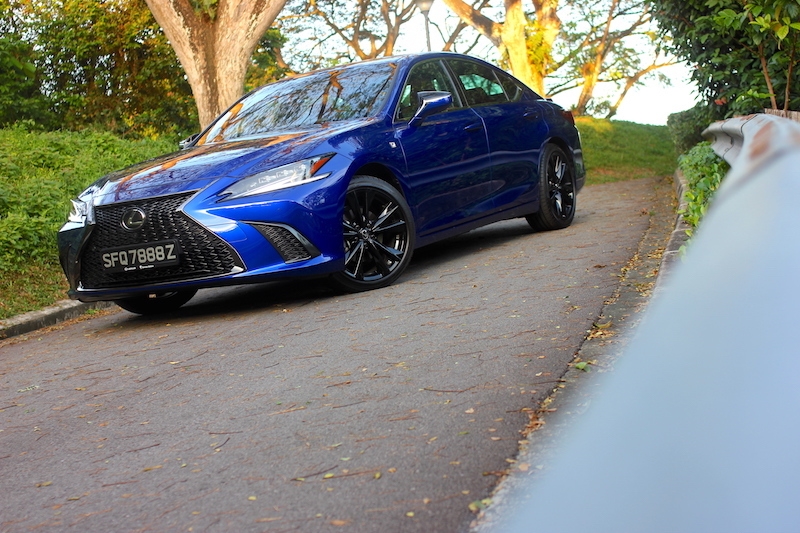
The Lexus ES250 F Sport, it would seem, is one answer: take the historically least sporty Lexus saloon - the FWD Toyota Camry-based ES - and apply a racy garnish to it. And in case you thought this was just some cynical window dressing, there’s some legitimacy to it: a couple years ago I interviewed the ES’s Chief Engineer Yasuhiro Sakakibara, who said the current-gen ES was engineered to be a sharper drive than before to cover some of the ground lost when the RWD Lexus GS was discontinued.
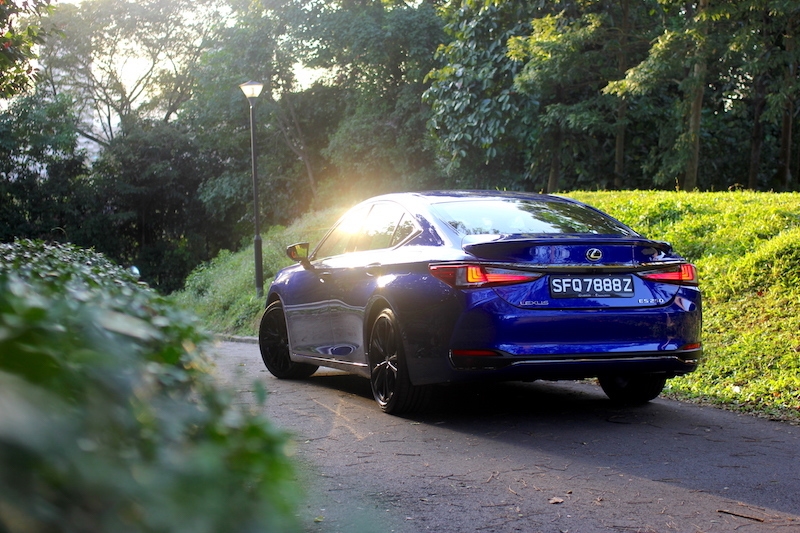
This is in fact also the first time a sporty trim of any sort has ever been available for the comfort-oriented ES, which has been around for as long as Lexus itself has existed. F Sport differs from the other ES trims by way of a mesh radiator grille (instead of slats), gloss black 19-inch rims (instead of 18s), a small boot spoiler, two-tone leather sports seats, and stiffened dampers.
So, has enough been done to make the ES250 F Sport a tempting alternative from, say, a BMW 5 Series, in the same vein as the manic RC F is from an M4, or svelte IS300 from a 320i?
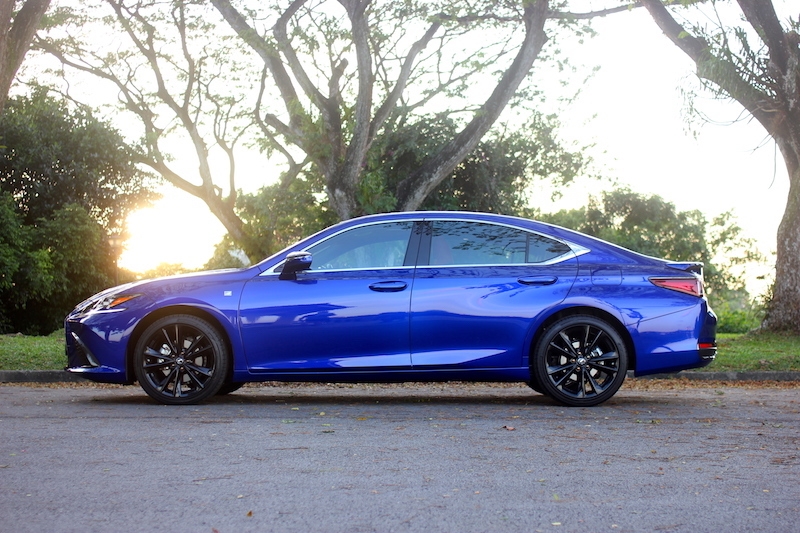
For starters, it’s quite the looker. The ES was already the only car in this segment that looked like effort was actually put into styling and sculpting it, instead of just slapping a corporate grille onto a 5m lump of car, and the F Sport trimmings make it stand out even more. The darker grille, enlarged bumper intakes, and twin 5-spoke wheels all give it a very subtle and classy aggression, and the F Sport-exclusive Heat Blue paint really pops in the sun.
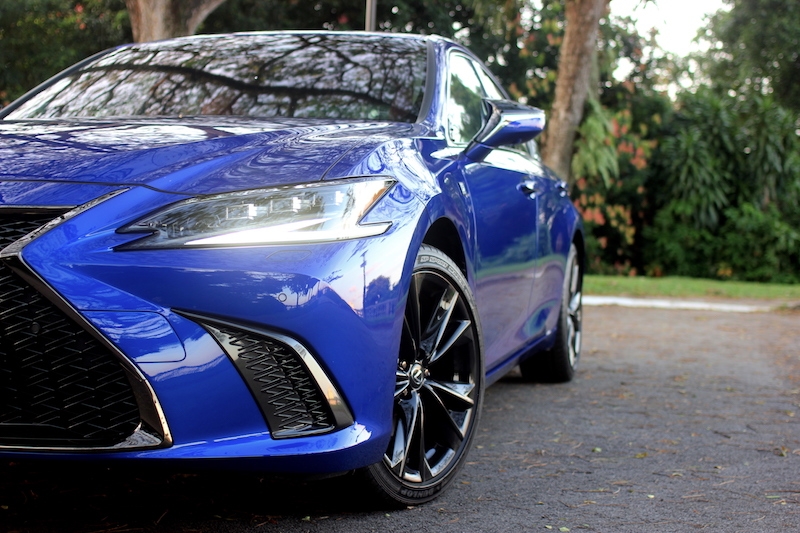
Open the door though, and the Flare Red leather interior has even more wow factor, and contrasts brilliantly against the exterior paintwork. It’s all a very welcome and refreshing change from the usual silvers, greys and blacks that you normally find cars of this ilk in.
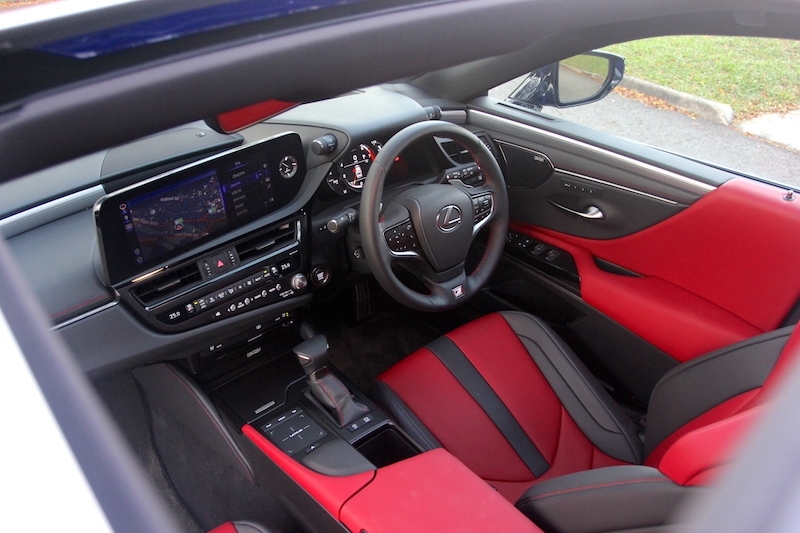
In fact the interior is probably the best thing about the car: sumptuous materials and build quality, tons of space in the back, an improved infotainment system (now touch-controlled, though Lexus’s OS is still far from the best), a kicking Mark Levinson stereo (with CD/DVD player - how quaint!), and air conditioning and ventilated front seats that could probably cool even the tensions in Ukraine right now..
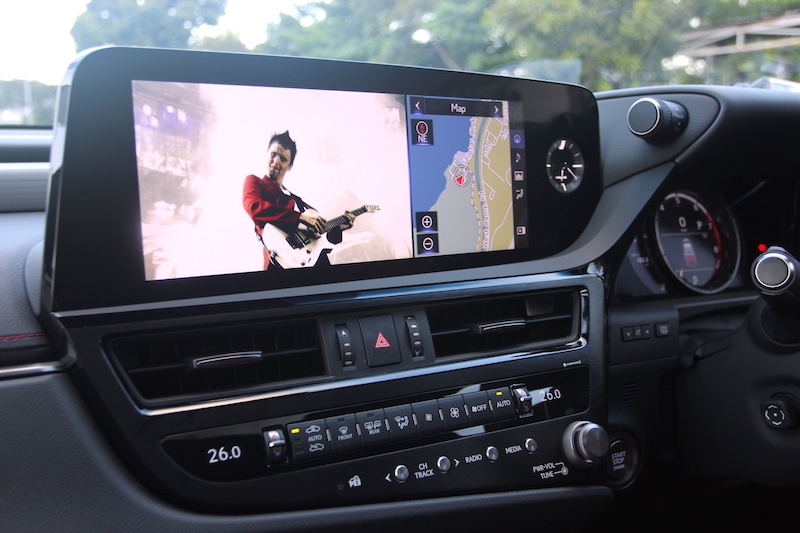
But it’s the details that really make being in the ES such a delight. Lexus keeps banging on about “Takumi craftsmanship” in their products, but far from being just marketing spiel, you really do sense that a modern Lexus is built to a higher standard than other cars.
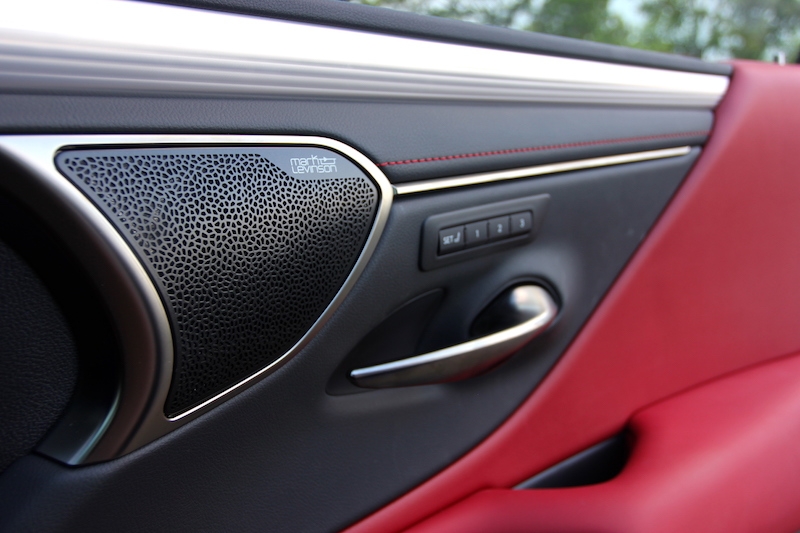
It’s all in the tiny touches you don’t think about but which bring joy when you encounter them: the complete silence of the windows going up and down; the oily smoothness and precision clicks of the knobs on the dashboard; the delicacy of the door handles and plushness of the door pulls whenever you open and close them; or the analogue clock that takes pride of place up by the big display screen.
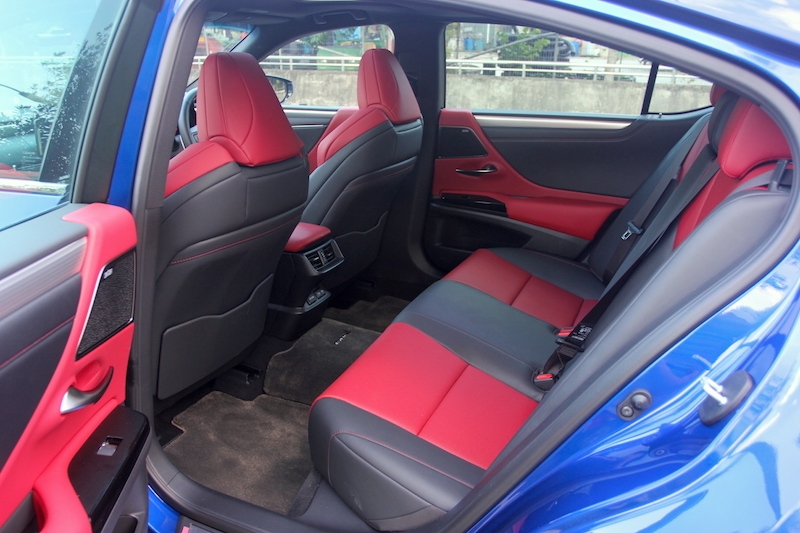
All of that adds up to an ambience that's much more personable than the cold business-like demeanour of its German rivals, one that actually makes you feel good rather than merely satisfied, sort of like being attended to by a geisha instead of a waitress.
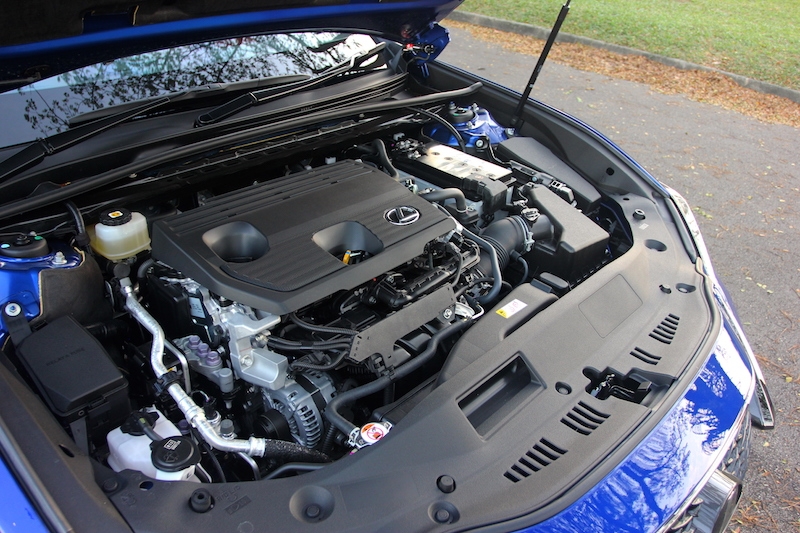
However, once you get moving, that air of serene homeliness is disrupted somewhat, which is primarily due to the ES250’s naturally-aspirated 2.5-litre four-pot engine. It’s fine in a Camry, but isn’t quite up to the levels of refinement one normally expects from a Lexus. It gets gruff and vocal when worked hard, and lacks torque at low revs compared to competitors’ turbocharged engines, often requiring the 8-speed auto transmission to kick down 3-4 gears (it’s very smooth though, in fairness) to perform merging or overtaking maneuvers. 0-100km/h acceleration is a relatively leisurely 9.1 seconds too, compared to the sub-8 second times posted by its closest European rivals.
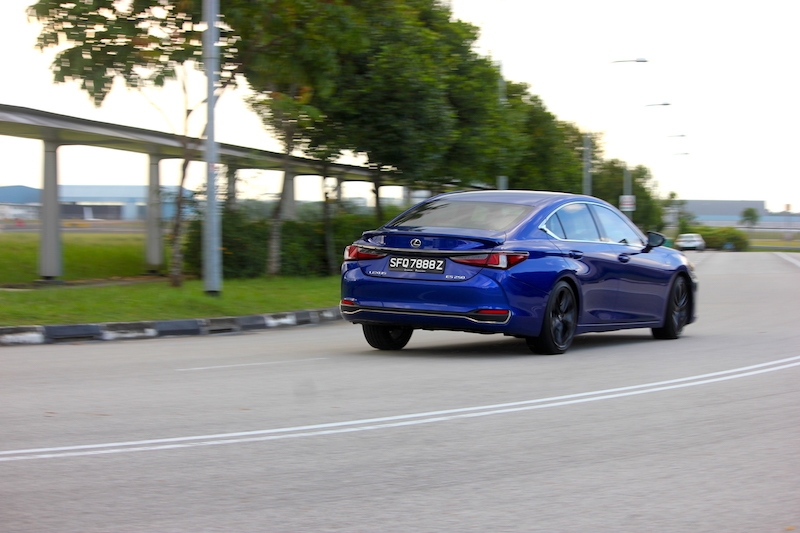
At least its ride should be plush and cosseting like a Lexus right? Well not quite, and it's the F Sport mods that are to blame this time. I've never encountered a Lexus that rode badly before, and the ES250 F Sport doesn't break that tradition, the 19-inch wheels and stiffer suspension impart a niggly harshness at city speeds and across rough ground like MRT construction zones. You can't call it uncomfortable, because the car still deals with big humps and long-wave undulations beautifully, but it does mean the ride is merely good rather than Lexus-like.
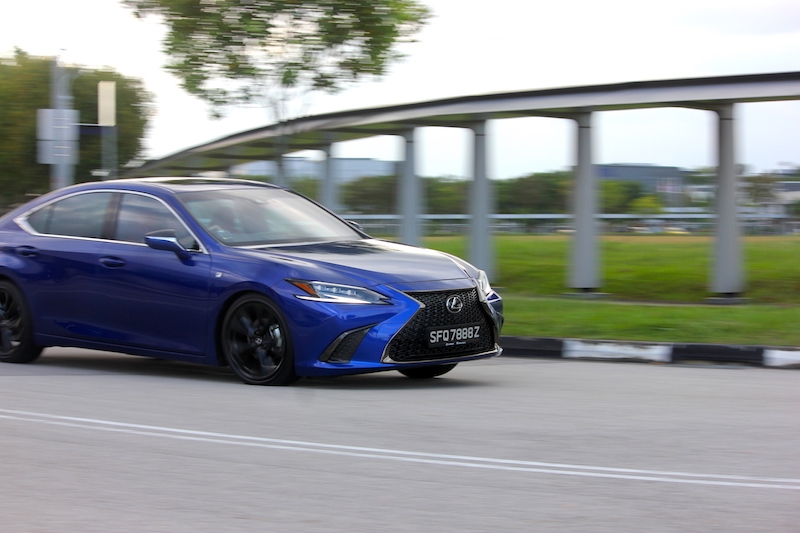
And it's not like the mods transform the ES into a car you'd bring to a B-road either; the TNGA GA-K platform that underpins the ES may be sharper than before, and the F Sport may be a touch more responsive still, but it's certainly no corner carver. Its dynamic attitude is best described as obedient rather than engaging, turning when you want it to, but never goading you into picking up the pace for the sake of it.
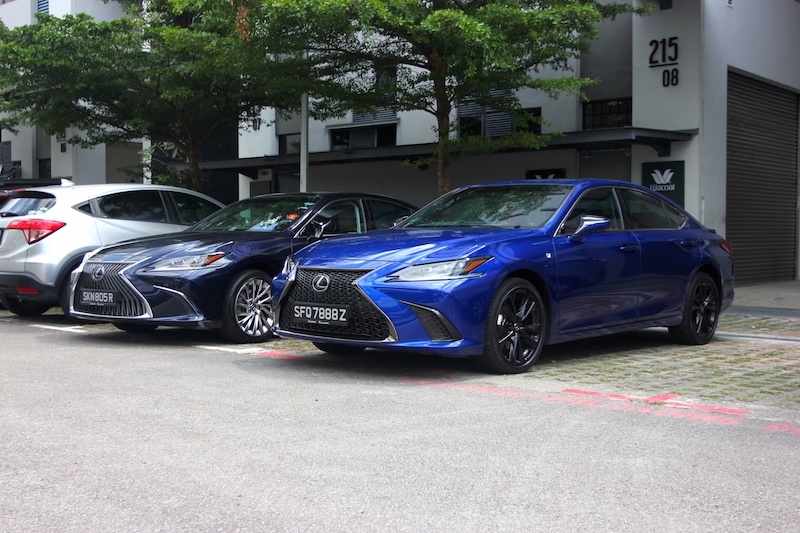
So that pretty much raises a quandary, who’s the ES250 F Sport really for? The ES’s traditional customer base doesn’t care one iota about sportiness, yet if you’re the sort of enthusiast driver Lexus was hoping to recapture after dropping the GS, not even the F Sport parts can overcome the inherent “wrong-wheel drive-ness” of the FWD architecture.
Don’t get me wrong, the ES as a whole is a pretty fantastic luxury car: silent, spacious, comfortable, and exquisitely crafted. But as much as I am a fan of fast cars and faster driving, even I can see that the F Sport trim is at odds with the ES’s softer, pulse-slowing character.
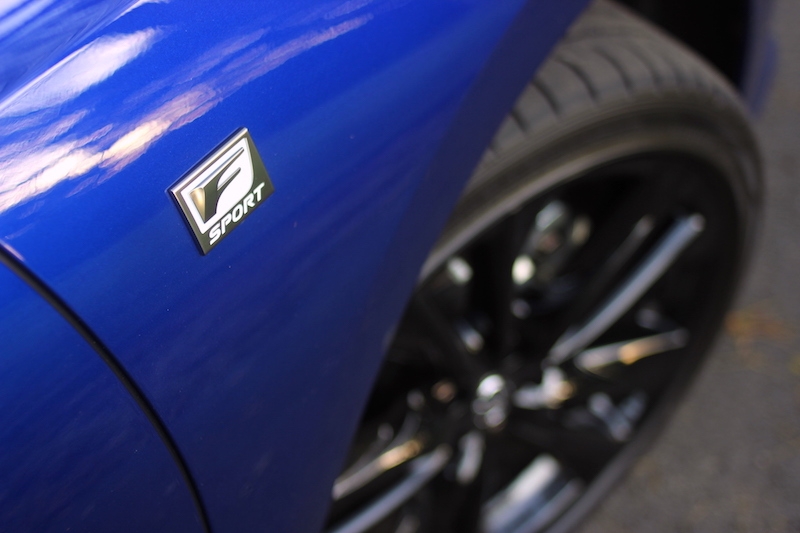
Yes, the sharp looks and exclusive paint and leather options have major aesthetic appeal, but shorn of that, all of the feel-good interior stuff described above applies to other ESes as well, so there’s not much you’re missing out on. It’s for this reason that instead of the ES250 F Sport, my money would go for the hybrid ES300h, where its softer suspension and electric boost capitalises on its strengths and goes all-in on the luxury experience. The ES250 F Sport is desirable, but here it’s a case of mistaken identity.
